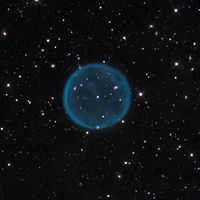Interstellar medium/Quiz
< Interstellar medium
| |
Completion status: Been started, but most of the work is still to be done. |
Interstellar medium is a lecture and an article about an entity that exists between and around stars. It is a mini-lecture for a quiz section as part of the astronomy course on the principles of radiation astronomy.
| |
Development status: this resource is experimental in nature. |
You are free to take this quiz based on interstellar medium at any time.
To improve your score, read and study the lecture, the links contained within, listed under See also, and in the course template. This should give you adequate background to get 100 %.
As a "learning by doing" resource, this quiz helps you to assess your knowledge and understanding of the information, and it is a quiz you may take over and over as a learning resource to improve your knowledge, understanding, test-taking skills, and your score.
A suggestion is to have the lecture available in a separate window.
| |
Educational level: this is a research resource. |
To master the information and use only your memory while taking the quiz, try rewriting the information from more familiar points of view, or be creative with association.
| |
Resource type: this resource is a quiz. |
| |
Subject classification: this is an astronomy resource. |
Enjoy learning by doing!
Quiz
See also
External links
- International Astronomical Union
- NASA/IPAC Extragalactic Database - NED
- NASA's National Space Science Data Center
- The SAO/NASA Astrophysics Data System
- SDSS Quick Look tool: SkyServer
- SIMBAD Astronomical Database
- SIMBAD Web interface, Harvard alternate
- Spacecraft Query at NASA.
- Universal coordinate converter
| |||||||||||||||||||||||||||||
![]() This is a research project at http://en.wikiversity.org
This is a research project at http://en.wikiversity.org